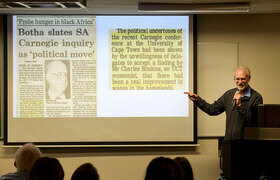Real estate, real sneaky
26 August 2002These desirable and secure cash flows have led to highly competitive financing structures among banks, that separate the debt and equity components of real estate, and it is these competitive and complex structures that Evans has been researching since 2000.
"A structured property deal refers to structures developed by banks to finance developments or investments, which separate the debt and equity components of real estate.
"The debt component or loan amount is the present value of the lease cash flow and the equity component is the value of the real estate at the end of the lease period.
"The details of these finance structures are not readily available and seldom revealed to the marketplace. The reason for this is that banks wish to retain their intellectual property which may allow them a competitive edge and to draw as little attention as possible to the tax-related benefits which form an important part of these structures," she explains.
Evans has recently had her research on the current position of structured finance in the South African real estate market published in the prestigious London-based journal, Briefings in Real Estate Finance.
The research into the complexities of structured deals was initiated by a pilot study Evans completed in 2000 around a specific financing structure for a particular building at Century City.
"What I found interesting is that the people who had borrowed the money to construct the building for their interests had used a structured finance deal. But what was more interesting is that they did not seem to know what they had let themselves in for. That study raised the question of 'who were the winners?' in that particular deal."
Research was conducted with the participation of selected banks and consultants who are the lenders and creators of the structures, as well as with the users who are the real estate investors or developers. A survey, in the form of structured, in-depth interviews was conducted with eight banks, two structured finance consultancy firms, eight developers and two investors, all of whom are active participants in the structured finance market.
Evans says that because the criteria surrounding each deal vary, 'deal specific' finance structures are created for each development or investment. "This has led to the information collected for my research being portrayed qualitatively. However, because of the confidential nature of each structure, the paper focuses on general rather than specific structures."
The research has revealed that the overriding focus of both lenders and borrowers was maximising the amount or present value of the lease cash flows. "Banks are innovative in their methods of increasing the present value of the lease cash flow in order to remain competitive in the market, by increasing the lease period, introducing residual values and relaxing tenant and lease criteria."
Evans emphasises that one of the things that makes these complex and risky deals attractive are the clear and quantifiable benefits that both borrower and lender incur. But these benefits, according to some interviews Evans conducted with players in the market, are being challenged by the South African Revenue Service (SARS) and borrowers may find themselves with substantial financial commitments should these challenges prove successful.
"Currently all parties to structured finance deals are winners because the results of SARS investigations are yet unknown. If they are successful, though, they could lead to fewer winners, particularly from a borrower's point of view," she concludes.
 This work is licensed under a Creative Commons Attribution-NoDerivatives 4.0 International License.
This work is licensed under a Creative Commons Attribution-NoDerivatives 4.0 International License.
Please view the republishing articles page for more information.










